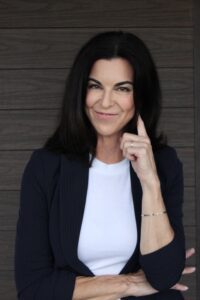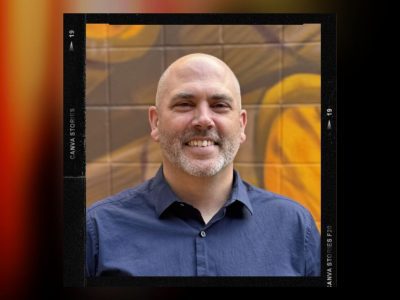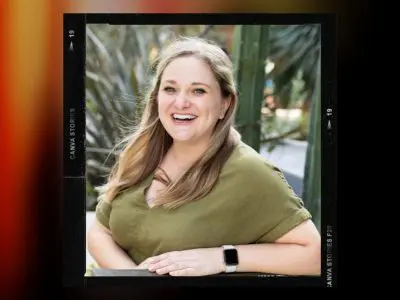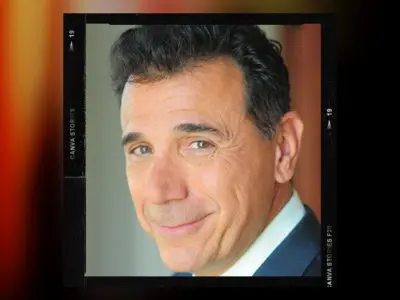Putting It Into Practice
w/ Lisa Nordquist
Use the buttons above to listen now.
Transcript - Putting It Into Practice
Rich: On this episode of team building saves the world
Lisa: where we’re still really primitive is in our psycho emotional well being and the way that we connect and communicate with each other. They’re also going to be asking for more from leadership, right? They’re going to be asking for more interpersonal for more growth, for more awareness of leaders to have about them as humans and what’s important to them.
Like, I’m above this, um, yeah. You’ve seen that movie. Hello
Rich: team. It’s me, your old friend, Rich Rininsland host of team building saves the world. The show where I speak to thought leaders from around the world, discussing variable strategies and tools to help you and your team build a better work environment. And today we’re taking a deep dive into the world of organizational transformation and employee engagement.
with my guest, interpersonal communications expert and the author of Love Yourself Fit, the struggle free way to end your war with weight, eat anything, and live happily ever after, Lisa Nordquist. But first, I do need to share some love with my supporters at Team Bonding. If your team is ready to experience teamwork and the power of play, then visit teambonding.
com to learn more. Now team, please join me in welcoming my guest. Certified Mayo Clinic Health and Wellness Coach and founder and CEO of gray monkey group, Lisa Nordquist. Lisa. Hello.
That applause comes from a small group of people. I chain up under my desk. They are here just to applaud you. That’s their only job.
Lisa: Lovely. Thanks Rich. Thanks for having me
Rich: today. Thank you. Thank you so much for coming on board guys, my team out there, please. If you have time and you want to do some heavy reading.
Just go find Lisa’s LinkedIn, the list of certifications alone. It’s like a, it’s like a storybook. It’s amazing. Speaking of which Lisa, let’s start off. Let’s get my team to know you a little bit better. You clearly have a passion for this kind of work. So what got you into it and ultimately led to you founding GMG?
Lisa: Well, it’s interesting that you mentioned my, my first book, Love Yourself Fit, because uh, what got me interested is I was already, I was in the field of behavior change and I had kids working, excuse me, let me go back. I had kids in school, I was working with people on changing their health and wellbeing through self care and uh, I noticed an alarming amount as we all did at the time of school shootings.
With the knowledge I had in psych and behavior change and the really scary stuff I started seeing in the world that we all are seeing now. Yeah, I just got this fiery passion for wanting to contribute to a more emotionally and relationally healthy planet. And so, for me, that started. My venture down the road of working with, um, teams and organizations, not just on the physical health, but on the mental, emotional, and relational health.
Rich: And it’s amazing how often those things dovetail and no one realizes.
Lisa: Yeah, exactly. And really it’s the same, a lot of the same principles that we use in both. So it just seemed like a natural transition for me.
Rich: And now you’re in the corporate side of it. What are you seeing out there? I mean. We all know that the whole reason this podcast, uh, even came about was because during the pandemic there, we know there was this huge shift of almost that pendulum of power between management and employee.
And so we saw, we, we were, we’ve been looking over for years now, seasons of this episode of this podcast, rather, especially just this past season. Everybody talking about how it’s time to transform the organization from the top down and to make sure that the employees feel more engaged. And have more of a say in how, where the organization is and where it needs to go.
So let’s dig into it. Let’s get into that now. I mean, what have you seen with your experiences at GMG that shows us the importance of it, especially in the world of emotional intelligence?
Lisa: Yeah, I’m kind of seeing like I’ve heard Brene Brown and some other people say that, you know, we’ve been on the, the tail, you know, we had the industrial revolution and the informational revolution, and now we’re heading into kind of what I see as a new era, which is that of the, the evolution of the heart and soul.
Hmm. COVID and your podcast and many like it and colleagues of mine, we’re all seeing this enormous amount of research and tools start to show up. You know, we see people going to classes just on to breathe and yoga and usage of substances go up and. All these things together kind of point out to me that we’re heading into a new area of need as a species that we’ve had just amazing growth with tech and science.
And, you know, we’ve developed just incredible stuff on the planet, but where we’re still really primitive is in our psycho emotional well, being and the way that we connect and communicate with each other. So. You know, like your podcast, bringing this to light and I think what we’re seeing in, like, the Gallup polls every year and well, being going down while engagement might be up here, but it’s happiness is going down.
Right? So I think we’re seeing this sort of real need. For a focus and development of this area of the human species is really evolving that part of ourselves and our ability to relate in the workplace and beyond.
Rich: And I was doing some research on you before coming in. My producer, Anna shared a bunch of great links about you.
And I did notice that video about, uh, about empathy and how empathy needs to be. You know, ignited in the workplace along with the emotional intelligence aspects. But my biggest question that I’ve always, that I’ve asked over and over and over again is how do you train this stuff? Like, what is it you personally have seen now and how do you try to get the leadership more engaged in emotional maturity and empathy?
Lisa: Good question. Well, I think 1 of the mistakes that a lot of us make as facilitators and trainers and proponents of this stuff is that we assume that this kind of learning emotional intelligence and communication skills happens at the same. Level or in the same way that we could pick up a book and read and it just doesn’t it’s a different kind of learning.
It’s limbic learning. So that means you, there has to be other elements in play for people to really get it and keep doing it because, you know, it’s easy. Like they say, it’s easy to drop 20 pounds. What’s hard is keeping the 20 pounds off. Right? Right. So same thing with this. It’s easy to take an emotional intelligence class or.
Yeah. Crucial conversations are safe conversations, whatever, but the practice takes a deeper level of meaning commitment, and that’s, I think, where leaders themselves as well as leaders acting as coaches can really help an org or a team take that on. And, I mean, that involves different levels of how you’re interacting and coaching, and there’s lots of places we could go with that.
But that limbic learning is really crucial. I think. Um, for organizations and leaders to understand it’s not just class.
Rich: I don’t want you to give away the store by any stretch of the imagination, but, um, give an example. Like, what have you seen where you have actually said to them, here’s where you need to look at this approach and come at it through more of that emotional intelligence angle.
Lisa: Yeah, so what comes to mind when you ask that is a leader knowing how to draw the connection between, you know, like, okay, my employee needs to start getting these reports done. Those TPS reports and lagging or they’re not doing a good enough job. It’s not as much coming at it from, uh, I want you to, you need to blank, but really sitting down with the, with the employee in a coaching and a person centered communication approach, like, using motivational interviewing, or 1 of those type of person centered tools and really engaging finding out what.
What is important to that employee that you could then create a line of sight between doing the TPS reports and their personal values? Because, you know, like I said, we’re seeing this need for people in the younger generations, especially wanting to bring in more of themselves. We’re seeing corporate activism at like, incredibly high levels.
This kind of tells us, like, People want to bring their whole selves to work and for leadership and organizations. That’s a great thing, because if they want to bring their whole selves, that’s a lot of passion. That’s a lot of drive, but they’re also going to be asking for more from leadership. Right?
They’re going to be asking for more. Interpersonal for more growth for more awareness of leaders to have about them as humans and what’s important to them.
Rich: So, well, how can we guarantee that while still making sure the work itself is getting done? Because I still remember, I come from the time period where I’m that generation.
The Gen X is out there. My, my fellow Gen X is out there. Know that nobody ever listens to us anyway, but we still remember the age where, you know, the, the narcissists were the most successful, so those were the ones you always wanted to bring on because they’re going to bring you the success when they fulfill their jobs.
Now we’re saying, no, that’s not it. That’s actually the opposite of what we want. How can I guarantee to any listeners out there management wise, who are thinking. I want the success as fast as I can get it. How is it that making my employee feel heard gives me that same level?
Lisa: That’s a big question. Yeah.
Well, first, I’m Gen X too. So I’m right there with you.
Rich: Then why do I look like this and you look like that, Lisa? That’s not fair.
Lisa: I, so I come from the same. You know, that that mindset, the authoritative leader, you do what you do. It doesn’t matter if you like, you are, you get it done, right? You’re not here to coddle you as an employee and yada, yada.
So, I completely understand that mindset and sometimes. We feel that way and I think the truth is that leadership isn’t isn’t 100 percent empathy and hey, whatever you need and let’s build you up. It’s not either or it’s both great leadership as we’ve seen. Over the past 10 years from all the research and the writers and the experts is it is a balance of both.
So it’s not completely. Let me coddle you and let you get away with murder. And it’s not completely. You will do what? I don’t care how you feel what a really good leader is. Just like a really good parent or friend or spouse. Is there a balance of both? They know how to do that dance and so like, I’m sure you’ve, you’ve heard many times someone who’s great at their job.
Who’s kick butt at sales that narcissist that can just slay. Yeah, they’re going to come in and they’re going to slay with the sales, but they’re also going to help you lose 2 or 3 other medium to high performing employees because there’s such. An unpleasant, you know, what a person that is that narcissistic, um, you know, go get her.
Yay. Short term, but long term, it’s a, it’s a poison to the team. Right? I mean, we’ve all been on teams. We’re like, okay, who wants to break it down to Becky? Who wants to tell Becky? No one wants to tell Becky. And really, like, you brought up the point a lot of the CEOs and higher level executives. Yeah.
Aren’t as emotionally intelligent as the middle level managers. Interestingly. So we see that discrepancy too, but generally speaking, when we graph. Emotional intelligence, it’s correlated, like, almost perfectly with performance. So, we know people that are emotionally intelligent, tend to be better performers.
And when you look at what you want in your organization, think about what you want to bring in. Do you want to bring someone who has integrity? Who will show up and do their job and be passionate about it and bring themselves in? Or do you want to bring in someone who’s going to be difficult for the team?
Yeah, they might bring in money, but they’re going to, it’s going to cause problems. Right? So. That’s 1 of the things. But again, I think it’s back to that balance leadership.
Rich: How much of this do you think is based on just on simple trust?
Lisa: Ooh, that’s a great question. Well, when I, I step back, I think it’s when you look at teams and leaders with teams, yes, or leaders of organizations.
I think trust, you know, like, let’s see, and he says, it’s, you know, the 5 behaviors. Of a team, it is crucial for teams, leadership teams, especially to have that trust or Amy Edmondson’s work in psychological safety. I’m sure you’ve heard of that too. Right? It’s huge. And, and, like, 1 of the companies I work with right now, they’re dealing with some trust issues.
And so it’s. We’re navigating that right now, um, because nowadays with, like you pointed out, this change in the style of leadership employees want to know more. They want to grow more. They want to know more. They don’t want to be kept in the dark. They don’t have that same blind trust that we Gen Xers had of like, okay, I’ll just show up and do my job.
They want to know they don’t trust organizations as much because, um, the world has changed. More has come to light. You know, and not all organizations have integrity, so,
Rich: so since you say you have, and I don’t want you to share anybody’s names under any stretch of the imagination. Thank you. But can you give us some of the insights you shared with their leadership teams?
Like, how do you garner that? Because we know it’s not just the leaders trusting the employees to do the job, it’s the employees being able to trust the leaders at the same time. They both need it. How can we make sure everybody’s getting it? That trust, you mean?
Lisa: Yeah, yeah. Yeah, it’s, it’s really hard because I’m going to go back and say, this is so much like a marriage or parenting or a long term relationship.
You have to be willing to be vulnerable. Sometimes, even when it’s really uncomfortable, you have to be willing. I, a lot of times when I’m working with a leader, I literally draw super stupid, but I draw a stick figure on the top of a mountain and I say. Here’s the leadership mountain. This side is empathy, compassion, understanding, really being there for your people and being on the same level with them.
This side over here. The other side. Is being strong, showing the way being authoritative when you need to. So it’s that. It’s going back and forth in that balance, but within that is a trust because your employees need to trust that. You’re going to take the lead. You’re going to defend them. You’re going to do the right thing.
You’re going to be strong and take action. And they also need to have the same level of trust that you are not going to humiliate them or embarrass them that they are safe to come to you. That the team is safe. You know, the elements of psychological safety with being able to count on each other and be vulnerable with each other.
That taking a risk is safe. Is safe interpersonally and professionally,
Rich: and I want to get more into this really quickly. So, but I do have to step aside. I hope you don’t mind. Give me just a quick second to tell my team out there about a company. I am so safe and proud to be a part of team bonding. Team bonding was founded over 20 years ago with one simple question.
How can employees have a great time while, while fostering strong, authentic bonds between people who work together? No matter where your company is located, Team Bonding offers powerful, engaging, custom team building events designed to get the best out of your team anywhere in the world. They’ve created a catalog of innovative events using the power of play as a learning tool and tapping into the correlation of work and play.
So whether you want to scavenger hunt, Jeopardy, or so much more, the Team Bonding’s of activities, be they live, virtual, or hybrid, maximizes the impact of team building with an accent on fun. So visit teambonding. com to schedule your event now. Team Bonding! When you want seriously fun results. And we are back with Lisa Nordquist.
Lisa, I just mentioned it right there. I mean, team bonding does offer custom build events. You have to customize for your clients as well. What kind of customizations have you had to deal with
Lisa: in the past? Oh, goodness. All kinds. I just wanted to say that what you just said on that ad for team bonding is so crucial in engagement is fun.
People need to have fun. Absolutely. Have fun right now. Absolutely. Yeah. This is a great place to do it. And you can really. Capitalize on that with training. So 1 of my more challenging clients has been a larger medical organization and they have, um, on top of the regular challenges of a medical entity right now with the burnout and stress is still going on.
They’re having a lot of turnover, more turnover in medicine. It’s closer to 20 percent than normal businesses, normal out of the medical. Yeah, but they’re siloed. They’re on 24 hour shifts. They’re remote. They’re just fair. It’s very. A challenging group, and they’re also dealing with really high levels of emotion with the clientele that they have.
So it’s been really a challenge for me to tailor and really go in on how do we work with this? So, looking at specifics. For example, working with 1 of their teams, a surgical team, they were struggling. There was some interpersonal conflict. There was some leader turnover. And so new leadership coming in and working with them and was like, this team is is a mess.
Like, they won’t talk to each other. Some of them won’t work with each other. There’s been accusations and so we really had to customize by going in and meet. I met with every single person on the team to do those 1 on 1s and find out really what was happening. And then what interesting what I found out is.
Part of the scuffle between the team was there was a lack of clarity. So, I guess what 1 of the things I wanted to point out is that I was brought in for interpersonal, you know, navigation. And how do we make the team cohesive again? And what I found through the interviews and the researching processes, there was 0 clarity on who does what to what level.
So, as when they’re on for 24 hours, they’re exhausted. They change shifts. And one person’s done everything and the other person said nothing. So then like I’m saying, you end up finding out, Oh, okay. There is this thing we need to tailor and go back to the basics of who’s doing what sees, you know, and then what we ended up doing is handing it to the team to figure out, you guys go ahead and figure out what the checklist is, because then you get the buy in, right?
Then you put it in front of them and you say, we all need to contribute to this. And then you get the buy in, so it’s less top down, but then that helped us get into the other areas of, like, the interpersonal complex.
Rich: It seems so simple, especially when I’m doing something like facilitation, when you get there on the day and you’ll see management, this happens maybe.
Three times out of 10, but you’ll still see management wanting to step aside and just review and watch what everybody else is doing. And it’s like, they need the teamwork. I need them to work well together. And I’m constantly saying to them. No, get in there with them. They need to see you. They need to know who you are in this, and then we can take all of that back with us back to the office.
Lisa: Yeah. You’re so spot on because the other thing is about facilitating is how’s it going to stick if leadership isn’t all in, right? They’re the ones that have to, like, even when I come in and coach leadership for six months or a year or whatever, they still have to be the ones to turn around. And coach their those under them middle management.
And then the team, so you have to get, to get that stickiness, like you’re saying, they got to jump in there and get 32. Right.
Rich: Right. Do you, when you’re doing so, um, when you’re training those managers, the, the upper levels, the C suites, as we love to call them, do you engage and involve those below them as well?
Lisa: Yeah, I mean, it really depends. Sometimes I will just work with the tippy top, like CEO other times, um, CEO wants nothing to do with it. He wants the middle management to all do it. He or she, so like, I’m above this.
Um, you’ve
seen that movie, but we eventually, I kind of come in like a sandwich. I try to work with the top and the bottom, so I’ll go into bottom excuse my language, but I will go into an organization and right away.
I am on the ground floor talking to ground people that are doing on the front line, either at the, at the checkout stand. At the hospital bed, whatever, because I, that’s where. The company is front facing, but that’s where you get the real good information. And by the time someone’s up at the top, they’re so removed.
They don’t know, you know, but they kind of, they’re not as self aware, which is a huge part of emotional intelligence. So, going into an organization, I want to be emotionally intelligent about how we approach. Whatever we’re going to do. So that means me and CEO and everyone in between and leadership, especially being re getting really clear on what is going on, becoming self aware, like of the organization.
Rich: Talking about those leaders, uh, what kind of metrics are they even looking for nowadays to show the successes? Because that has changed dramatically. Yeah,
Lisa: yeah, so I am not much of a metrics math girl. I would rather have your guest who is the, um, organizational psychologist come in and run all my tests, but I do do them because I lost, but I think what leaders are looking for, obviously, performance.
And right now, with the past couple of years we’ve had, I think people really want to see stickiness. They really want to see people stick around. Right? Um, and a lot of leaders really, you know, they’re in it to win it. They want to help people grow. They want them to stick around. But the 2 major things I think I see are wanting retention, bringing in the right people, keeping them around and then a peaceful workplace, please.
Like, do we need this much drama? I mean, you and I being Gen Xers are like, we don’t need this much drama. You would go home and complain to your spouse. Right? Yeah. Yeah. Yeah. So, a lot of us that are now in top levels, we’re like. We don’t know what to do, right? And so it’s just kind of part of it is evolving those leaders to, to understand, oh, this other part is going to make it work better.
But yeah, those two things, I think leaders want to see, they want to see happy, effective teams and keep them around the good people around.
Rich: Is that what you would consider the ideal leader or have you actually like experienced, because there are so many different types out there still to this day. So is this what you want leaders to realize they need to become?
Or have you seen a type of leader that is so effective just in what they’re doing that they, there’s just one or two things that need to, you know, tweak a little bit in order to, to make it pristine.
Lisa: Yeah. So I think personally, I think again, I’m going to go back to my stick guy on the mountain. Yeah. The best leaders I’ve seen.
Have that they’ve either learned because we know, you know, when we started talking today, you said, how can we do this stuff? How do we learn it? We know? No, no, no, no, no. For sure. That emotional intelligence is learnable. It’s not like. We can grow it. We can train our brains. We can grow it. The limbic system is malleable.
The amygdala will work for us instead of against us. So we know that we can grow that part. So a lot of leaders that already have that. Yeah. They know how to rock and roll and lead, and they are crystal clear with boundaries. They can learn that empathetic communication and listing instead of talking and listening for values and all the things that we teach.
Very possible. So my ideal would be that balanced leader that, you know, and, and leaders tend to favor one side or the other, right? Yeah. Authority. We favor favor that empathetic, um, but having both, both sides to, to pull on, I think is, is crucial.
Rich: Huge. Just the other day, I was doing an event where for the first time, and I’ve been doing this since about 2009.
Uh, so for the first time, I actually had a client come to me and say, In all the teams we have, find me the number one leader and I’m sitting there going, um, okay, that’s a trick, but I’ll see what I can do for you. And then, yeah, because that’s something that I have been trained to actually look for because usually that what I call the natural leader.
Are the ones who will lead their teams more easily to success. And it’s the leader who asks questions instead of directing is always going to be, even if that question is, Hey guys, do you think this instead of this, just getting everybody’s just because they want to be heard and they wanted to, their opinions matter.
And they’re more excited to do whatever this guy wants them to do.
Lisa: Absolutely. So I hear you kind of saying like mixing a visionary style with a coaching style.
Rich: Exactly. Right. Yeah. This is why I have guests. I don’t know how to say these things. Thank you.
Lisa: Well, no, but that sounds like, I mean, I hear you saying underneath that there’s still a place we want to go and.
That I’m going to use a coaching style to get there, which is so brilliant because then you’re going to get that people are involved with the solution, which means just like little kids eating their growing their own vegetables. They’re going to eat them. Right? But you’re going to get better ideas because a lot of times your people know.
Stuff that you don’t write and you’re just going to get more innovation and creativity and all that. So I would agree with you that that I think leaders need to learn to coach.
Rich: Perfect. Can I actually ask you, I want to get a little more personal. I hope you don’t mind. You are the leader of your organization above all.
Yes. Um, yeah. Was there a moment in, in being the CEO of GMG where it, it tweaked with you personally about what kind of leader you want to be and how you’re going to take the steps to get yourself there? Or was it literally somebody had to tell you what was needed?
Lisa: Actually, it was working with someone under me.
I realized not too long ago that here I’m teaching and doing all this stuff. And I realized I’m like, Oh, I’m really irritated that this one client is having a hard time having one on ones. And I’m like,
It’s kind of like, oh, hello, you know, one of those things, I think, you know, there’s parts like all of us, strengths and weaknesses, we all have our strengths and weaknesses and I’m really good because I have teenagers now.
I am really good at kind of being in the face of my own weaknesses with emotional intelligence and having to pause. Take a breath, be self aware, use like tools of like Did that not land? Well, you know, like, I’m really aware of that, but like all of us, we kind of forget or silo ourselves and go, oh, I got to do that with these people too.
You know, so I’ve found it easier in my personal life to bring this stuff. And then I have, of course, recognize like, oh, I’m missing this chunk with this employee or whatever. So, yeah, it was just a moment. I think I had not that long ago embarrassingly that I was like, I’m not, I don’t know what she wants.
It’s for her big picture with her career, right? Right. Right. I’m here coaching people on it. So yeah. I in face right here.
Rich: Can I, can I ask, cause you brought it up. How do you do with teenagers? I have one myself and it’s so hard. There are times I want to go talk to that boss who just can’t come and play with everybody else instead of talking to my own kid.
Lisa: Oh yeah. Yeah. Teenagers are rough. I think, um, they are the best, you know, the hardest people in your life to deal with. This hurts. I just had a conversation with a client last week about this. This hurts to say, and I know it because I felt it so many times. The hardest people are your best. Features if you have a staff person, that’s a borderline personality disorder.
Oh, girl, they’re going to be so good for you. They’re going to teach you so much about simple interaction. And same thing with a teenager. They are. Amazing 1 of the teenage podcast lady says they’re incredible BS meters. They will pick it out and they will be like, what are you saying that for? You know, there, and I actually have taught classes on this.
I love the motivational interviewing tool for teenagers. It’s a really and just taking that person centered approach what I summate down for some of my classes is I call it lure listen empathize reflect. Don’t go to parent. Just stay with them and listen, empathize and reflect and then eventually. You can coach your way into offering feedback, you know, using some of the, those tools, but I just did it with my teenager last night.
Not kidding. She was crying and we did a little. And by, I don’t know, 20 minutes later, she was off getting help with her homework that she was crying about. So I was very excited about that. So yeah, you can’t. So learning the stuff, all the stuff you guys talk about has so much value for people in their lives.
Rich: Yep. And I got to say with my own kid, the ability to pivot has become my strength, the, the quick, well, just, just getting that moment of, and I’ve taken it into my professional career with me. Getting that moment of I’m going in a certain direction and I’m getting nowhere. Oh, how fast do I realize that’s not going to work as a, as a strategy.
Let’s make it this instead.
Lisa: Yep. Going in a different direction. And a lot of times people don’t want to do that, but I’m sure you’ve found this. It’s easier than it than it feels in your head, right? Like, a lot of times people follow you, even if you’re like, you know what, let me rephrase that question or, you know, I didn’t quite do that as well as I would like.
Can I give it another shot? You know, like, you’re saying that really, really people are. Generally cool with it. Yeah. Teenagers, meh
Rich: sometimes I want, I wanna take the opportunity with you also, Lisa, ’cause I know you have a, a vast international presence. Culturally,
Lisa: I wouldn’t say vast. I think vast is a little
Rich: Well, more vast than I have, but . Okay. . But, um, what kind of cultural differences have you seen?
Lisa: That’s huge. Yeah. I think it’s huge. When you, I was talking to someone, I had a keynote in August and I was talking to someone who was working in the same industry trying to change almost a, a, a country. Mm-Hmm. in the Middle East, their entire approach to this one segment of medicine.
And she was just devastated, like it was so hard to fight. A culture fight a society’s belief systems and values. And so what I have found is just like, you know, we use in motivational interviewing or person centered approaches. We don’t push against resistance. We roll with resistance. And we find out by listing and asking good open ended questions.
Where are the values? Because somebody somewhere has a value that is will equate in business terms to what we call success or being productive in air bunny quotes. Right? So, there is either they want to make money. Or they want their kids to go, you know, to have a house, or they want their mom to have a house.
So somewhere in there, there’s some. Values that we can find that we can create that line of sight between that person’s values and their behavior. And so other countries, like the EU, their engagement levels, like, 14 percent it’s like, half of what ours is in the States because they have different values.
They don’t value the. You know, like we are in the States, I can be that narcissistic, like, I can be a rock star and you know, we’re, we’re in it for, we have different, we’re raised differently. Right? So. But there’s always something in a different cultures or even each company kind of has subcultures, right?
So there’s always something in the people that you can help them grab onto and use for their success or the success of the team, I think.
Rich: So I’m going to put it here. Cause we, cause I love ending on as positive a note as I can. What hopes do you see for the future and what advice will you give to. Not only leaders, but also employees and in the field or employees that have been here there forever and are helping Tobin to adapt to this change.
To keep everybody moving in that positive direction.
Lisa: Yeah, so I think that the direction I see us going is really needing again, needing and evolving into that next era of the heart or of emotional intelligence or whatever. We end up calling it relational competence. I don’t know what it’s going to be called.
I like that the next era of development. Because we really have the tools. I mean, we have the tools, you know, this is akin to in the 1860s positions. We’re still not washing their hands between the morgue and labor and delivery, right? Because they didn’t know. Well, now we know that these invisible things within us and between us have a massive impact.
On our well, being and our companies and our ability to succeed. So, with that in mind, we have the tools to wash our relational hands. Now we can do it. So, I, my, if I could advise the world, the corporate world, it would be to start embracing. Things like emotional intelligence and coaching style communication, because, uh, it, you know, to be, you know, Gandhi ish, it starts right here and then it will bleed outwards.
Love it.
Rich: Thank you so much, Lisa Nordquist. Everyone, please give her a big round of applause. Thank you again for coming on. That was amazing. That was, it was fast. It was succinct. It was wonderful. I think this is a great way to really sum up everything we’ve already experienced this season and to put a nice bow on it.
Thank you for joining us to that. Did you have a good time?
Lisa: Oh my gosh. Yes. I don’t tie pretty bows, but I guess I do.
Rich: Now you do. You can just put it on, put it on your resume. They’re metaphorical, but you can still add it. It’s fine. I’ll let you have that. But I hope you continue to have a good time, Lisa, because as I told you in the beginning, it’s time for my speed round.
Alright. So you told me you listened to the show before and I thank you for that, thank you for being a listener. But um, just so you know what this is, I’m going to be playing music for 60 seconds in length and that just keeps me in track of the time. Uh, during that time, I’m going to ask you a series of very innocuous questions, just a way for us to get to know you a little bit better.
This is a game, uh, but it is a game to see how many questions we can actually get you to answer. Right now, the massive that we hit this season is 15 questions. Wow. In 60 seconds. Do you think you’re up for it? I’m up for it. Fantastic. Good. Let’s hit the ground running. As soon as you hear some music, I’m going to ask that first question.
Good luck. Away we go. What’s your name? How many kids do you have? Which one’s your favorite?
Lisa: No comment.
Rich: Do you have any pets? If you could ask your pet a question and get an answer, what would that question be? Why? Yeah, if you can have an. Brand new first name. What would you choose,
Lisa: Nadia.
Rich: If you could leave Earth on a spaceship and take someone with you, who would it be?
One person,
Lisa: my husband.
Rich: What is your favorite movie quote?
Lisa: I don’t know. I don’t have
Rich: one. Okay. Uh, using one word, describe your family to me.
Lisa: Fun.
Rich: What’s your favorite thing that you remember about kindergarten?
Lisa: Uh, eating plate. Do
Rich: you talk to yourself all the time? What kind of things do you say?
Lisa: Would
Rich: you rather be an Olympic medal winner and Academy award winner or the Nobel peace prize?
No, no, Lisa. Yes, you got 15.
You have tied for our number one. Well done. Thank you, Lisa. Quick. Uh, before we sign off, is there anywhere people can go to learn more about you to find your books? Because I understand you wrote, you’ve written more than one by this point. Oh, just
Lisa: the one that’s
Rich: public. Yeah. Okay. Okay. Then they can find your book.
Um, they can find out and they can find out about GMG.
Lisa: Yeah. So, um, my website is gray monkey group. com and that’s gray with an E. And then also LinkedIn forward slash Lisa Nordquist. Very easy. Thank you
Rich: so much. You were fantastic. You were fantastic. See, I was just feeding you. So you’d say that. Thank you.
My fantastic team out there, gang. That’s it. We are wrapping up yet another episode of team building saves the world. You’ve enjoyed this episode. Whether you’re new to the podcast, an old fan of the show, please be sure to share it with everyone, you know, whether they’re a coworker or friend or family member, it just helps us to share all this vital information.
You can find out all about us, including all past episodes at teamfounding. com slash podcast. You can also find us wherever you find your favorite podcasts, Google podcasts, Apple podcasts, Spotify, wherever you go to listen. My friends, we will be there. And if we’re not there, I want you to look for all of us on the social media, the team bond podcast, leave me a message, tell me where we’re not.
So I can come be where you are listening. Plus while you’re on all the medias, the team bond podcast, leave us a message telling me what you like about this show. What you didn’t like about the show. If you have an idea for future topic on the podcast, I want to hear from you. So before we say our final farewells for this episode of team building saves the world, please never forget.
My friends, if you are within the. You’re on my team now. And I am forever gonna be on yours. So long, team! I’ll see you next time!
It’s been said that you learn more about a person in
Lisa: an hour of play than in a year of conversation. So why not put your co workers to play with the help of the team at Team Bonding? Team Bonding was founded over 20 years ago with one simple question. How can employees have a great time while fostering
Rich: strong, authentic bonds between people who work together?
Lisa: Their catalog of innovative events includes… Jeopardy and much more. Each
Rich: activity, whether live, virtual or hybrid, maximizes
Lisa: the impact of team building with an accent on fun. Visit teambonding. com to schedule your event now. Team
Rich: Bonding, when you want seriously fun results.
November 21, 2023
Lisa Nordquist’s Proven Strategies To Transform Your Organization.
On this episode of Team Building Saves the World we wrap up Season 4 with leadership expert Lisa Nordquist. Join us as we explore practical insights, success stories, and actionable strategies for effective leadership, employee engagement, and organizational change. Listen as we uncover the keys to putting theories into practice, as Lisa shares her invaluable experiences and innovative approaches, guiding listeners towards a transformative journey in pursuit of organizational excellence. You don’t want to miss this one.
About Lisa Nordquist:
 Lisa Nordquist, BA, CHWC, is an expert in interpersonal development and behavior change. An accomplished wellbeing expert and author, Lisa leverages 25 years of motivating change, mindset training and sustainable program creation to help high-impact individuals and teams create sustainable emotional intelligence and refined communication, leading to productive, happy organizations. Lisa has worked with corporations, hospitals, universities and international governments, and appeared on numerous radio, TV and podcast programs, including CBS News and ESPN Sports Radio, delivering passionate, powerful presentations. She has a degree in Psychology and a number of certifications, including Mayo Clinic Health & Wellness Coach, GLT Core Dynamics Coach and Safe Conversationsä Leader. In 2014, she authored “Love Yourself Fit: the struggle-free way to end your war with weight, eat anything & live happily-ever-healthy”, winning the silver medal in the Global eBook Awards. Lisa is a happily married mother of two and lives in San Diego; she enjoys her peeps, dogs, dark chocolate and wine.
Lisa Nordquist, BA, CHWC, is an expert in interpersonal development and behavior change. An accomplished wellbeing expert and author, Lisa leverages 25 years of motivating change, mindset training and sustainable program creation to help high-impact individuals and teams create sustainable emotional intelligence and refined communication, leading to productive, happy organizations. Lisa has worked with corporations, hospitals, universities and international governments, and appeared on numerous radio, TV and podcast programs, including CBS News and ESPN Sports Radio, delivering passionate, powerful presentations. She has a degree in Psychology and a number of certifications, including Mayo Clinic Health & Wellness Coach, GLT Core Dynamics Coach and Safe Conversationsä Leader. In 2014, she authored “Love Yourself Fit: the struggle-free way to end your war with weight, eat anything & live happily-ever-healthy”, winning the silver medal in the Global eBook Awards. Lisa is a happily married mother of two and lives in San Diego; she enjoys her peeps, dogs, dark chocolate and wine.
Check out our blog for strategies and tips to transform your organization here!
" People want to bring their whole selves to work and for leadership and organizations. That's a great thing, because if they want to bring their whole selves, that's a lot of passion. That's a lot of drive, but they're also going to be asking for more from leadership. Interpersonal for more growth for more awareness of leaders to have about them as humans and what's important to them."- Lisa
Get more human resources and leadership advice.
Less drama? Greater teamwork and job satisfaction? TeamBonding is here to help you build a stronger and happier team. Subscribe to get our team building podcast and thought leadership blogs sent straight to your inbox.















